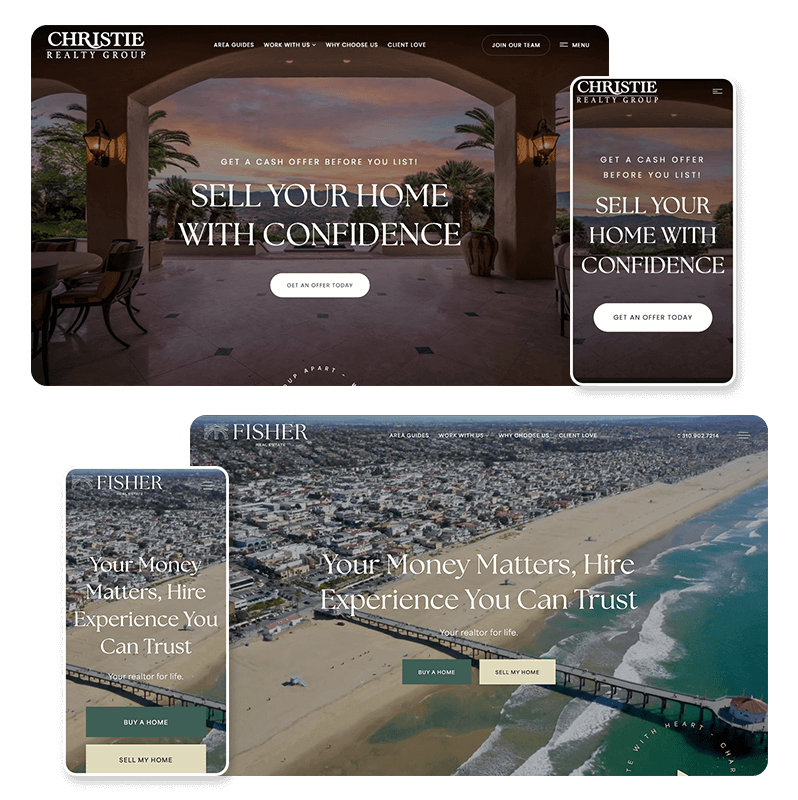Real Estate Blog
The Hottest Real Estate Marketing, Website, and Technology Insights.
Category:
All categories
Author:
All authors
All authors
Abhi Golhar
Agnes Gaddis
Amelia Frank
Daniel James
Danielle Taffe
Danni Eckstein
Dave Queen
Dusan Stosic
Jesús Cedeño
Julien Diemer
Kenneth Boyd
Landon Murie
Lauren Morley
Luke Belcourt
Mark Saldaña
Matt Laxen
Misael Lizarraga
Nelson Quest
Nick Ingrisani
Ray Slater Berry
Scott Russell
The CE Shop
Veronica Baxter
Yassine Ugazu
Sort By:
Newest
Real Estate Content Writing: From Strategy to Sales
Read Article
Real estate content writing that attracts clients and builds trust. Learn how to write blogs, listings, and guides that support your sales goals.
Nelson Quest
Founder & CEO
Powerful Listing Strategies to Maximize Property Value
Read Article
Listing strategy tips to price, market, and present properties for faster sales and higher value. Learn proven tactics used by top real estate pros.
Nelson Quest
Founder & CEO
10 Creative Pop-by Ideas For Realtors That Generate Referrals
Read Article
Pop-by ideas for realtors connect you to clients with thoughtful gifts that build loyalty, spark referrals, and keep your name top of mind.
Nelson Quest
Founder & CEO
How to Turn One Real Estate Listing Into 10+ Quality Leads
Read Article
Turn one listing into multiple leads with proven strategies for open houses, digital marketing, and neighborhood outreach.
Nelson Quest
Founder & CEO
How to Create High-Converting YouTube Ads for Real Estate
Read Article
Making great YouTube ads for real estate agents starts with smart strategies and tips to attract buyers and sellers in your local market.
Nelson Quest
Founder & CEO
Real Estate Email Unsubscribes: Here's Why and How to Fix It
Read Article
Real estate email subscribers are unsubscribing due to poor content, frequency, or mobile issues. Learn how to fix it and keep your list engaged.
Nelson Quest
Founder & CEO
How to Create an Real Estate Mission Statement
Read Article
Learn how to write an effective real estate mission statement that reflects your values and connects with clients.
Nelson Quest
Founder & CEO
Effective Real Estate Signage Strategies for 2025
Read Article
Real estate signage to attract buyers, build your brand, and drive leads. Discover proven strategies, materials, and placement tips.
Nelson Quest
Founder & CEO
How Real Estate Agents Get Back to Business After a Break
Read Article
How real estate agents get back to business after a break with a clear plan, updated skills, and client reconnection strategies.
Nelson Quest
Founder & CEO
How To Stay Motivated In Real Estate: A Complete Guide
Read Article
How to stay motivated in real estate with proven daily habits, mindset shifts, and systems to help agents stay focused and productive.
Nelson Quest
Founder & CEO
Real Estate Cold Calling: 9 Proven Scripts for 2025
Read Article
Discover proven scripts, tips, and legal must-knows to help agents cold call and convert real estate leads.
Nelson Quest
Founder & CEO
How to Build a Real Estate Agent Email List: A Complete Guide
Read Article
Real estate agent email lists: learn how to build or buy lists to grow leads, stay compliant, and increase engagement.
Nelson Quest
Founder & CEO



